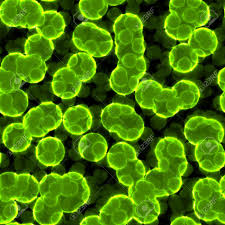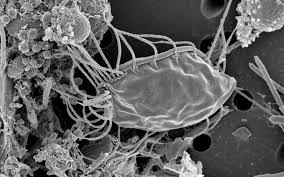Taxonomy, which is the science of biological classification, is divided into 3 main interconnected parts that include identification, classification and nomenclature.
- Identification: This is the practical side of taxonomy which helps to determine that a particular microorganism isolated from a given sample belongs to a recognized taxon (group) of organisms. In identifying an organism, varying experiments are often undertaken in order to characterize and designate the organism to a given taxon following already laid down classification scheme.
- Classification: This is the arrangement of living organisms into different groups (or taxa) based on some shared similarity or evolutionary relatedness shared by the organisms being classified. In classifying a microorganism (e.g. bacteria), an understanding of the results obtained from observational, experimental, biochemical, morphologic and physiological examinations carried out on the organism is always taken into consideration when assigning an organism to a given taxon.
- Nomenclature: This is the component of taxonomy that assign names to organisms based on already published guidelines or principles. The characteristics of a given organism (e.g. bacteria) is also taken into consideration when assigning it a name
Microorganisms have wide taxonomic distribution and this includes organisms such as viruses, bacteria, protozoa, algae, fungi, and Archaea.
Living organisms including microbes are usually named using a binomial system which was developed by the Swedish biologists, Carolus Linnaeus (1735 – 1759) in the mid-18th century. Linnaeus classified and named a wide variety of plant and animal species in the early 1700s; and his classification as at the time still stands the basis for the classification of living organisms even till date, even though some recent molecular techniques are now being employed in the taxonomical arrangements of organisms. Carolus Linnaeus’ system of classification is still used till date in part, and with modification in addition to other methods of classification that involves molecular techniques as aforementioned. Linnaeus developed a system of classifying living organisms (inclusive of microorganisms) in a Latinized and italicized approach that gives two names to every living organisms.
Carolus Linnaeus developed the binomial system of microbial classification; and this technique is also employed in the characterization of microorganisms and other living systems for easy identification and differentiation. Out of the many system of classification that was developed as at the time, only Linnaeus’ simplified system of classification stood the test of time and survived till date. The binomial nomenclature (which assigns two names to an organism i.e. the generic name and specific name) is generally used by microbiologists when naming and classifying microorganisms. In binomial system of classification, each species is assigned two names viz: the generic (genus) name and the specific (species) name.
The genus (plural: genera) name is always capitalized while the species name is not; and then are both italicized and underlined when written. The reason for italicizing or underlining the scientific names (i.e. genus and species names) of organisms is because these names generally have a Latin or Greek origin. They are not English words and usually, they are derived from the Greek or Latinized versions of the names of persons that discovered them or places they were discovered. The species name is often the fundamental taxonomic group in microbial taxonomy because while the generic name may change (i.e. if the organism is assigned to another taxon due to new information about it), the species name still remains and is always given priority in microbial cataloguing. For example, Enterococcus faecalis was formerly known as Streptococcus faecalis after the genus Streptococcus was later divided into two new genera viz: Lactococcus and Enterococcus. Also, once the genus name of an organism has been previously mentioned in a text, it can be abbreviated in subsequent text with initial of the genus followed by the specific epithet. For example, Enterococcus faecalis can be written as E. faecalis once it has been previously mentioned.
Genus contains one or more species of organism that is different and entirely separate from species of other genera. Species are collections of strains of an organism that have many stable attributes in common, and which notably differ from other groups of strain. A strain is a population of microorganisms that differ distinguishably from at least some other population of organisms within a given taxa. Strains are population of organisms that originate from a pure culture isolate or a single microorganism. However, some biologists still believe that the Linnaean system of classification is limiting due to some evolutionary differences amongst organisms. Other more recent techniques included in the classification of organisms, and which is genetic or molecular-based include: G+C content (i.e. the organisms guanine and cytosine DNA content), DNA sequencing, DNA hybridization, biotyping, serotyping, ribotyping, PCR characterization, electrophoresis techniques, analysis of the ribosomes (especially the 16S ribosomal RNA of an organism), and other chemical characterization systems. Both phenotypic and genotypic differences are often used when characterizing prokaryotes (bacteria).
References
Ciccarelli FD, Doerks T, von Mering C, Creevey CJ, Snel B, Bork P (2006). Toward automatic reconstruction of a highly resolved tree of life. Science, 311(5765):1283–1287.
Euzéby, J. P. (2010). List of Bacterial Names with Standing in Nomenclature. Int. J. Syst. Bacteriol., 47, 8 July, 2016. Retrieved from http://www.bacterio.cict.fr/m/micrococcus.html
Fauquet C.M, Mayo M.A, Maniloff J, Desselberger U and Ball L.A. (Eds) (2005). Virus Taxonomy. Eight Report of the International Committee on Taxonomy of Viruses. Burlington, M.A. Elsevier Academic Press.
George M. Garrity (2005). Bergey’s manual of systematic bacteriology. 2. Auflage. Springer, New York, 2005, Volume 2: The Proteobacteria, Part B: The Gammaproteobacteria.
Grenfell B.T, Pybus O.G, Gog J.R, Wood J.L, Daly J.M, Mumford J.A and Holmes E.C (2004). Unifying the Epidemiological and Evolutionary Dynamics of Pathogens. Science, 303(5656): 327–332.
Gupta RS (2000). The natural evolutionary relationships among prokaryotes”. Crit. Rev. Microbiol, 26 (2):111–131.
Janda, J. M., and Abbott, S. L. (2006). The Genera Klebsiella and Raoultella. The Enterobacteria (2nd ed., pp. 115-129). Washington, USA: ASM Press.
Madigan M.T., Martinko J.M., Dunlap P.V and Clark D.P (2009). Brock Biology of microorganisms. 12th edition. Pearson Benjamin Cummings Publishers. USA. Pp.795-796.
Moreira D and López-García P (2009). Ten reasons to exclude viruses from the tree of life Nature Reviews Microbiology, 7(4):306-311.
Murray P.R, Baron E.J, Jorgensen J.H., Pfaller M.A and Yolken R.H (2003). Manual of Clinical Microbiology. 8th edition. Volume 1. American Society of Microbiology (ASM) Press, Washington, D.C, U.S.A.
Purves W.K, Sadava D, Orians G.H, and Heller H.C (2007). Life: The Science of Biology, 7e by Sinauer Associates, W.H. Freeman and Company, Sunderland.
Salyers A.A and Whitt D.D (2001). Microbiology: diversity, disease, and the environment. Fitzgerald Science Press Inc. Maryland, USA.
Woese C.R, Kandler O, Wheelis M.L (1990). Towards a natural system of organisms: proposal for the domains Archaea, Bacteria, and Eucarya. Proceedings of the National Academy of Science, 87(12):4576–4579.
Discover more from #1 Microbiology Resource Hub
Subscribe to get the latest posts to your email.



